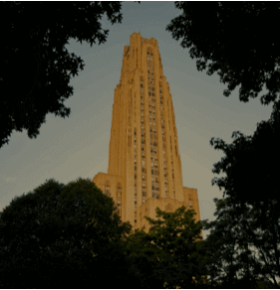
Subscribe to Pittwire Today
Get the most interesting and important stories from the University of Pittsburgh.A new study by Jeremy Levy was published in Science Advances

In 1999, University of Pittsburgh chemist David Waldeck joined an investigation into how electrons scatter from chiral molecules. Instead of isolated molecules in the gas phase, the research team created organized films of chiral molecules and made a discovery that launched the field of chiral-induced spin selectivity (CISS): electrons that measured more than a thousand times larger than expected and showed dramatically different spin orientations.
A quarter century later, co-senior author Jeremy Levy , a Distinguished Professor of Condensed Matter Physics in the Kenneth P. Dietrich School of Arts and Sciences’ Department of Physics and Astronomy, reunited with the University of Oxford’s Andrew Daley — a former Pitt professor and early Pittsburgh Quantum Institute collaborator — to steer a study that combined chemistry, quantum physics, physics, biology and organic systems. The pair developed, in essence, a programmable platform that could provide new ways to explore electrons in chiral systems, such as DNA, amino acids and proteins.
The research group was able to sculpt electron pathways into arbitrary spiral geometries at the nanoscale, creating artificial chiral systems where every parameter can be precisely controlled. Their results, published last month in Science Advances, reveal surprising quantum phenomena and offer new routes to explore the underlying mechanisms behind effects like CISS.
“What sets our work apart is that we can literally sketch chirality into existence with nanometer precision,” said Levy, who is also founding director of the Pittsburgh Quantum Institute. “The most striking discovery is the quantum interference patterns: As electrons travel through these artificial spirals, they undergo coherent oscillations that create a distinctive fingerprint in the conductance. These oscillations reveal the underlying spin dynamics in ways impossible to see in natural molecules. Unlike fixed biological structures, we can dial the pitch, amplitude, even the handedness in real-time — it's like having a tunable knob for one of nature's most mysterious properties.”
The team’s approach builds on a technique the Levy group pioneered in 2008, with a twist: Researchers used a conductive atomic force microscope tip to “write” electronic circuits, while modulations resulted in a new technique that represents an advance in quantum control.
“This is just the beginning,” Levy continued. “We've created a quantum playground where we can test theories about chirality that have been challenging to verify in biological systems. Now we can explore segments with varying pitch, opposing chirality and different endpoint polarities — all factors believed to be crucial for understanding how nature uses molecular handedness. Our ultimate goal is to decode the quantum rules that make chiral molecules so special for life.”

